The MLS is a league which stands out as a result of its competitive balance and levels of parity. A concept that remains unique compared to the elite European leagues, rules and regulations concerning spending have led to a range of franchises being successful over the years. However, one team grabs the attention of fans each and every year, with their prolonged success setting them apart.
Backed by the Red Bull group, New York Red Bulls continue to smash records, maintaining a 14-year streak of achieving the MLS playoffs, one which eclipses any other current team across all US sports. Having reached a playoff berth in 24 of their 28 seasons within the division, one would have thought the franchise would’ve tasted its fair share of success. The reality of the situation is that the Red Bulls have yet to achieve ultimate glory in the MLS Cup, with their only final appearance in 2008 ending in defeat.
With interim manager Troy Lesesne guiding RBNY to their latest playoff qualification, his dismissal left fans wondering who would take the reigns and bring balance in such a tumultuous period for the club. Up steps former Bundesliga manager Sandro Schwarz, setting off on his first journey in American soccer and already making strides to evolve his side’s style of play and raise their ceiling. This tactical analysis will begin to identify some of Schwarz’s changes which have made their start to the season incredibly exciting. The swift evolution of their tactics has aimed to harness existing strengths, with our analysis also highlighting their ability to develop a new playstyle, making them excel in all phases of play.
Shifting the Red Bull identity
Over the years, clubs within the MLS have maintained a clear understanding of what to expect when facing up against the Red Bulls. In line with their footballing philosophies over in Europe, RBNY have been characterised by their incredibly intensive pressing efforts, almost relentless at times in an attempt to drain the life out of their opponents. A collective pressing effort was instigated to pin the opposition within their own defensive third, aiming to cause turnovers and find themselves in advantageous situations in which they could attack with increased threat and numerical advantage. This was epitomised by their statistics for PPDA, which ranked as the highest in the MLS for each season since 2015, achieving 8.01 last season. The image below depicts their committed pressing in their MLS playoff defeat to Cincinnati FC last campaign, with both forwards aggressively pressing the opposition keeper in order to compromise optimal passing angles and ideally force Cincinnati into giving the ball away.
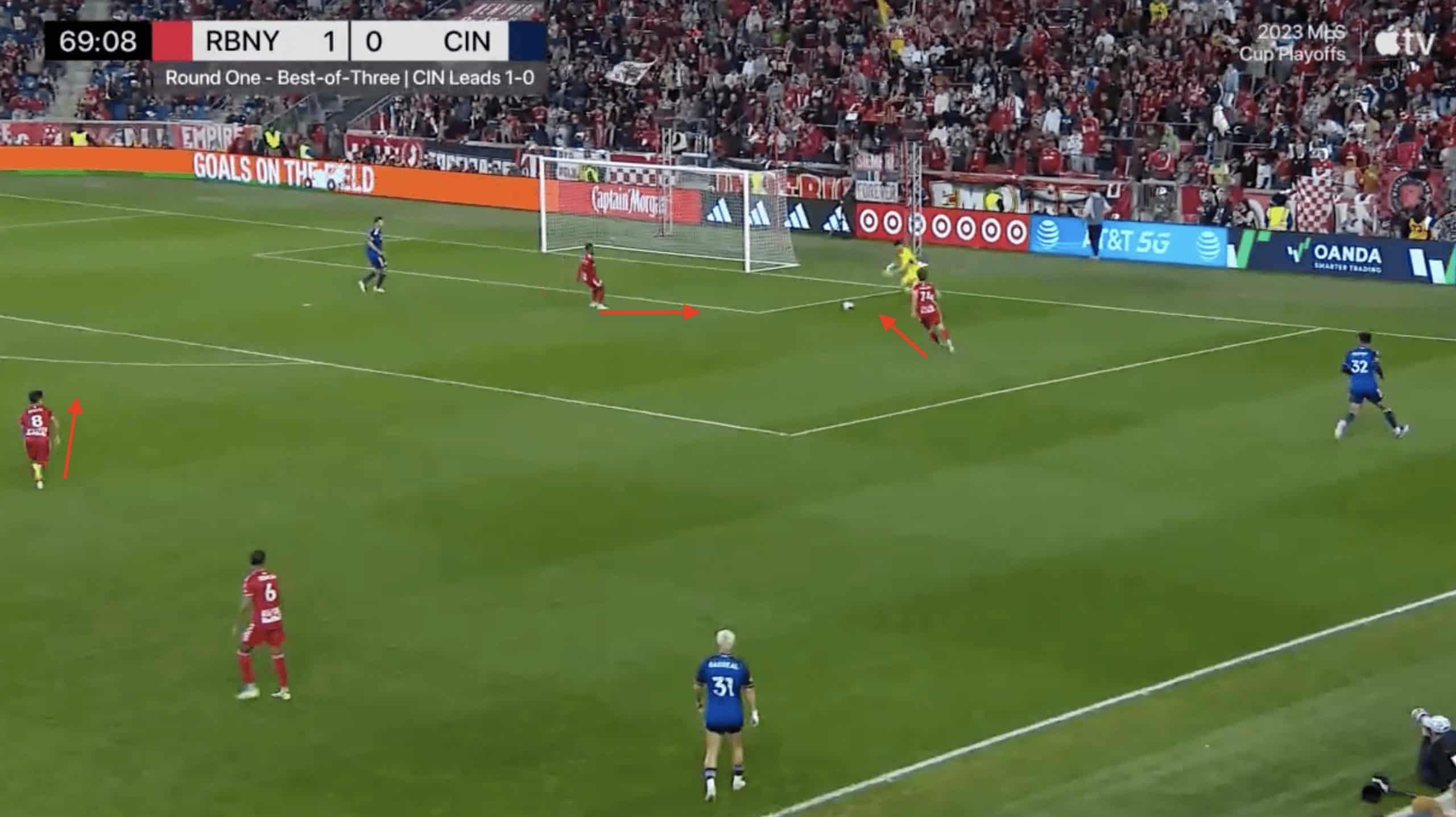
Even though Sandro Schwarz was hired as a result of his positive play and likeness to his predecessors Lesesne and Struber, the German has modified his pressing system this season with the view of making it more sustainable. Despite the fact that the high-intensity off-the-ball play is engrained within the Red Bulls team, they have displayed more intelligent pressing, selecting their moments to pounce and willing to invite pressure from the opponents to work in their favour when counterattacking. Indicative of this would be the fact that their PPDA has dropped to 12.84 in 2024, an alarming shift which has appeared to have worked in their favour in regard to overall results and league position.
Since his appointment, Schwarz has implemented numerous formations which can be used to highlight their talents out of possession. The most common would be their variations of the 4-4-2 or 4-2-2-2, depending on the height of the two wide midfielders. When in the 4-2-2-2, the two forwards can press from the front and apply pressure to the opposing central defenders, especially targeting loose passes back towards the opposition’s goal. This was evident in their recent visit to LAFC, where we also saw Forsberg and Carmona (deployed as the wide men), look to press the opposition full-backs in the initial phase of play, allowing Frankie Amaya to step out of the double pivot and shadow the run of the LAFC holding midfielder dropping deep to offer a passing outlet for Lloris. Due to the fact that they still maintain a high offensive presence within the final third, Schwarz’s team can still effectively counter-press and often find success, creating chances from winning possession high up the field- ranking 3rd in the MLS for goal-ending high turnovers with 3.
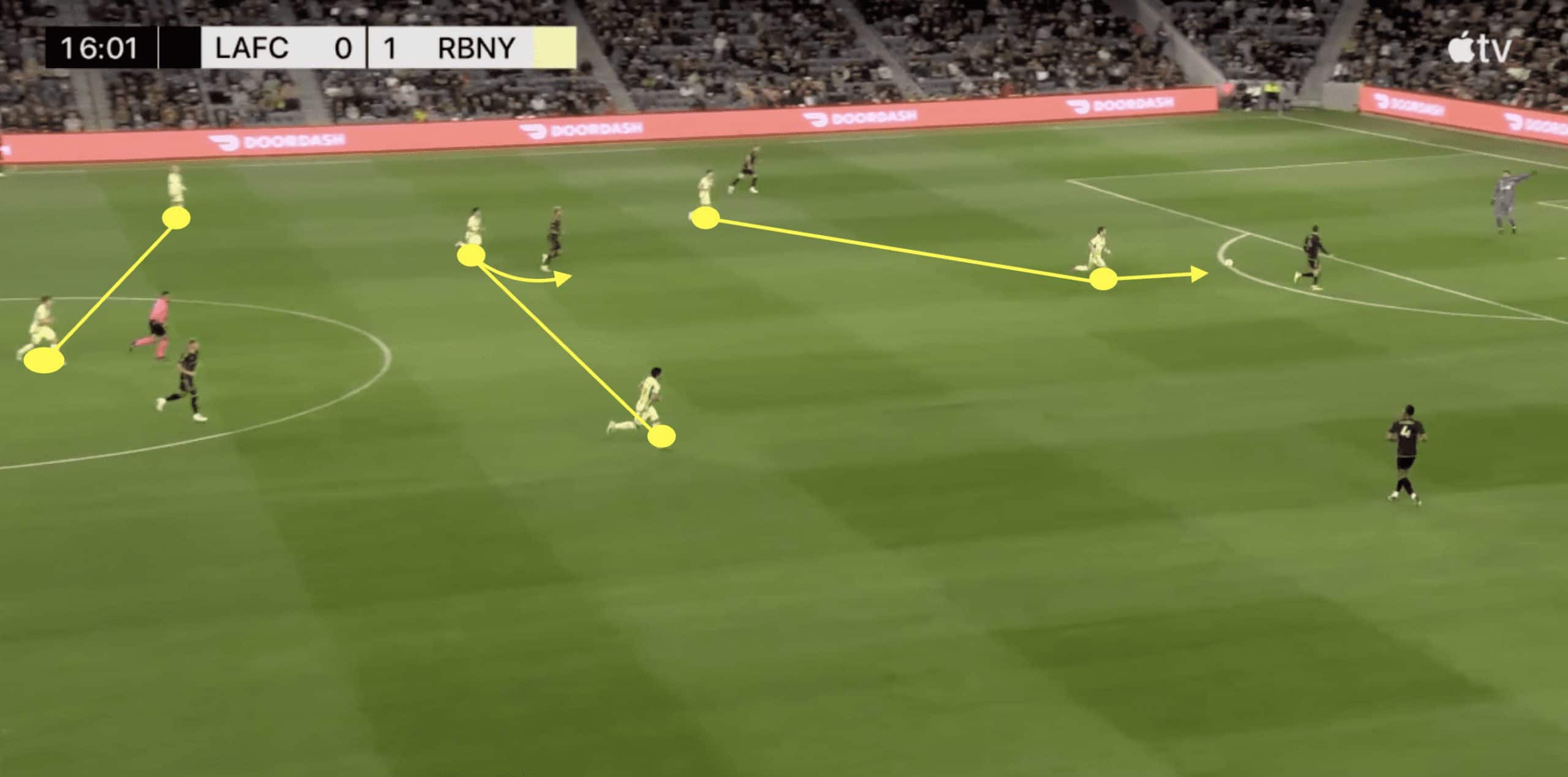
They have also excelled in the 4-2-3-1, whether through in-game tactical adjustments or a change in formation from the outset to accommodate their biggest talents. Away at LAFC, we saw the league leader in assists, Dante Vanzeir, drop deeper into the number 10 role, pick up the marking assignment for Ilie Sanchez, and allow the double pivot to stay tighter towards LA’s two advanced eights.
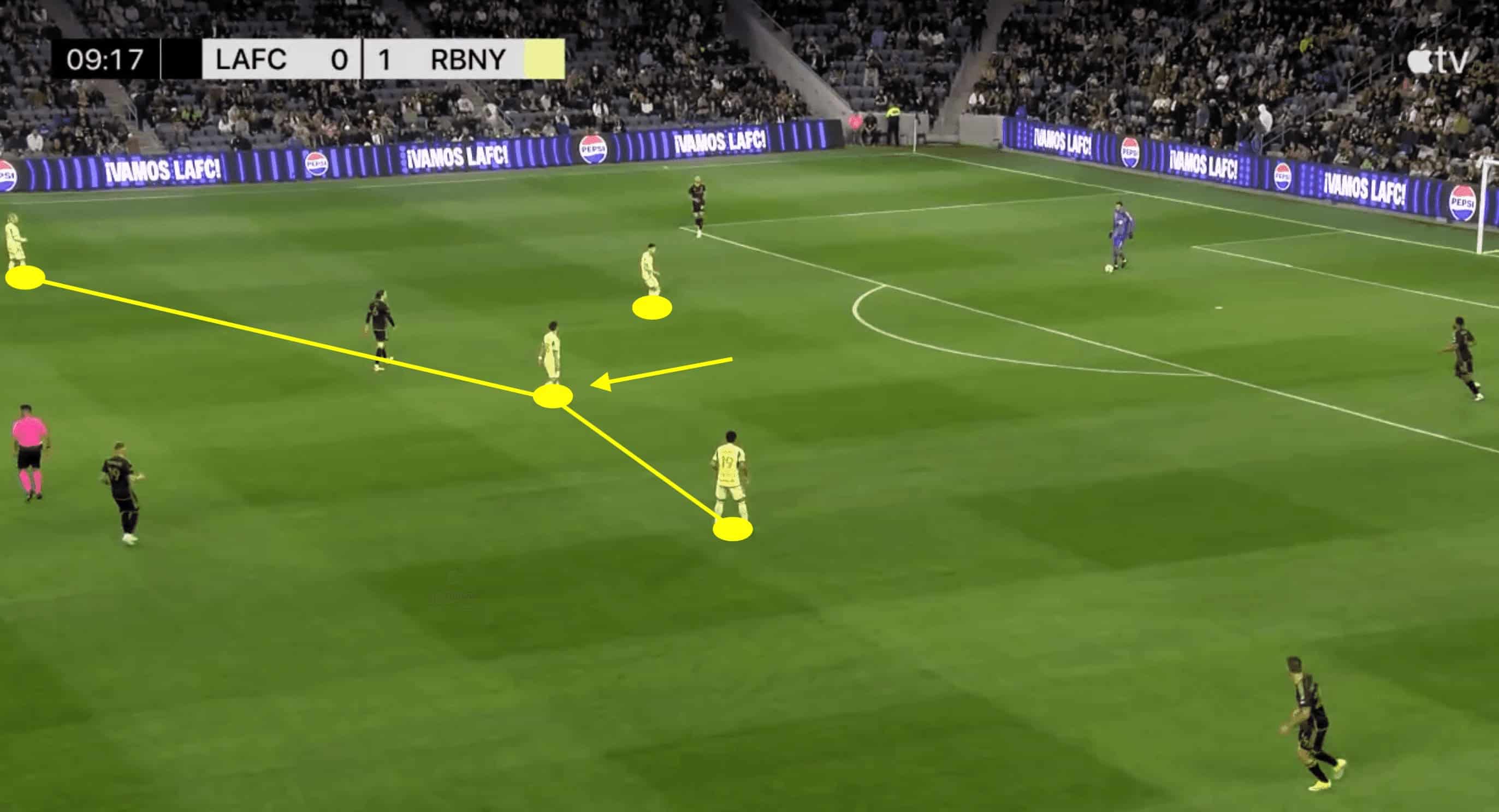
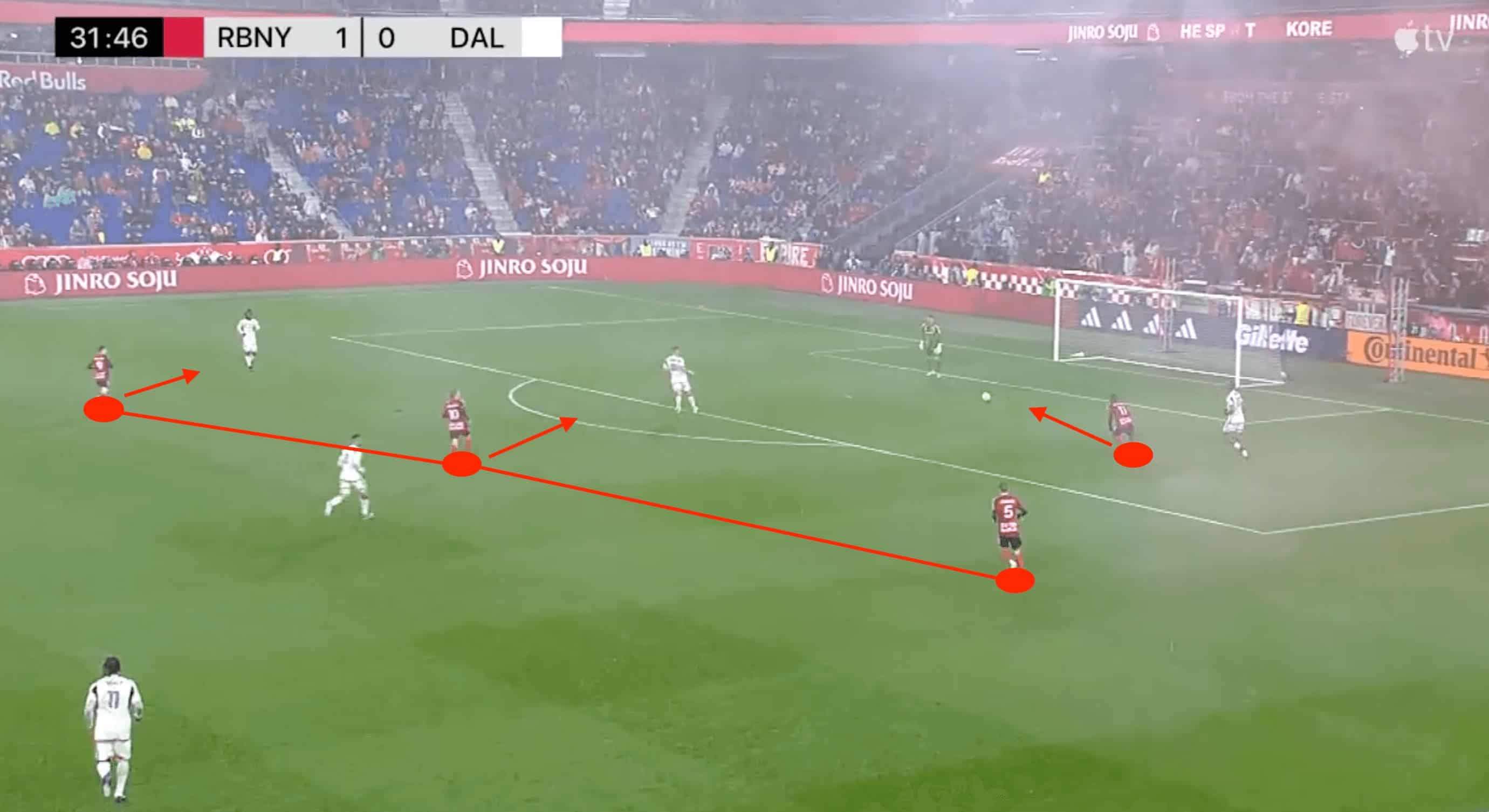
Defensive solidity
In line with their talented pressing system, New York Red Bulls have always been impressive when it comes to defensive figures. In fact, in what was considered an underwhelming campaign with managerial swaps thrown into the mix, the Red Bulls still only allowed 33.9 xG all season, the lowest in the Eastern Conference. Despite a shift towards a more toned-down pressing effort, the Red Bulls still rank number 1 for both non-penalty expected goals conceded per 90 and xG conceded per shot, with 0.78 and 0.07, respectively.
Schwarz has been able to introduce aspects to their defensive play which many would have thought they would never see- the ability to defend much deeper and soak up opposing pressure. The Red Bulls of old had seen their playstyle become more effective against the weaker sides and somewhat undone when facing teams of greater strength. However, the start of this season has shown Schwarz’s side go toe to toe with multiple playoff contenders and a massively improved Inter Miami side vying for the title, being defensively resilient for the majority of those matches. Their average height of defensive action was recorded at 34.68m against LAFC and 39.89m when facing Cincinnati; a stark contrast from a side who were known to place their defensive line not far from the halfway line.
The ability to defend deeper can be owed to tactical changes from the manager- and it all comes from their positioning from the initial phase of play. With a more passive pressing effort than usual, the holding midfielders can find themselves dropping deeper to support the defensive line, creating a stern barricade in front of a resilient back four.
Swedish influence in possession
The one area in which RBNY were seen as quite deficient would be their play within the final third, often failing to create and convert the majority of their chances. Last season, they massively underperformed their expected goal tally, scoring only 36 goals from 46.3 xG in the MLS. Their usage of the ball in the past has been particularly disorganised, often ceding possession high up the pitch with longer, ambitious passes- hoping that their pressing can get them out of trouble and catch the opponent off guard in their defensive third.
The introduction of Sandro Schwarz has coincided with one of New York Red Bull’s most exciting signings in recent history- the technical Swedish midfielder Emil Forsberg. His capture was made in a way that gave him more comfort in possession, with the Swede being able to orchestrate attacking moves instead of the previous chaotic way of going forward. RBNY remain threatening in transition, ranking 2nd in the MLS with 0.24 xG per 90 from counters- but they have added a new dimension to their attacking play. This was evident in their dismantling of Messi-less Inter Miami, where Schwarz had recognised the ball dominance of Sergio Busquets and aimed to soak up pressure before launching counterattacking moves with devastating effect.
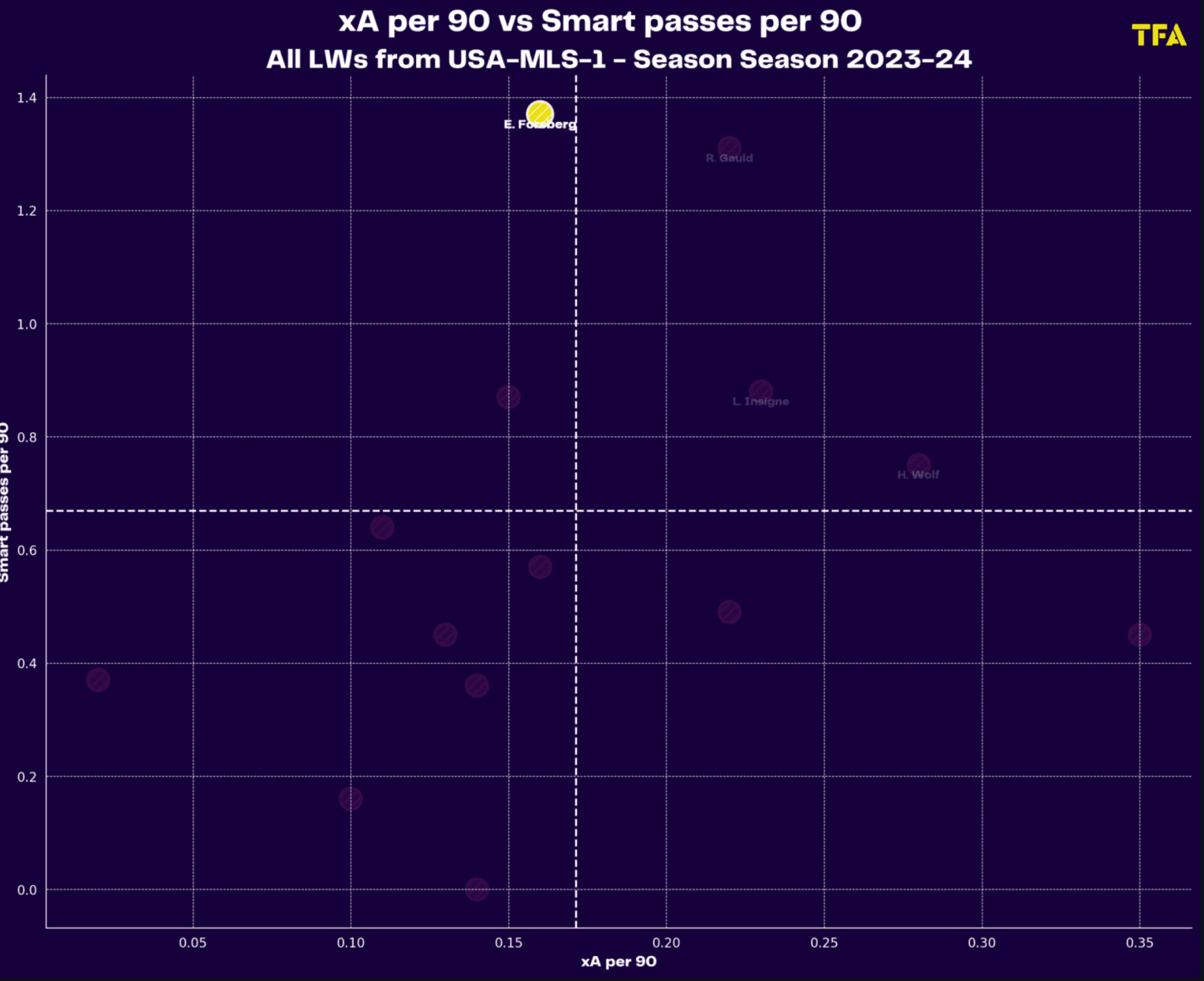
New York’s year-to-year creative numbers have seen a positive upturn, with longer passing sequences regarding both time and quantity of passes. Whilst not setting the league alight with their underlying statistics, they have managed to raise themselves from the bottom of the rankings in such a short amount of time under this new system. The introduction of more intricate passing sequences was on display in Los Angeles, with Forsberg inverting from the left and bringing others into play, combining nicely before crashing into the penalty area. Forsberg ranks in the 95th percentile for MLS midfielders for shot-creating actions with 4.75 per 90 and is seeming like the man to put their offensive woes to the side.
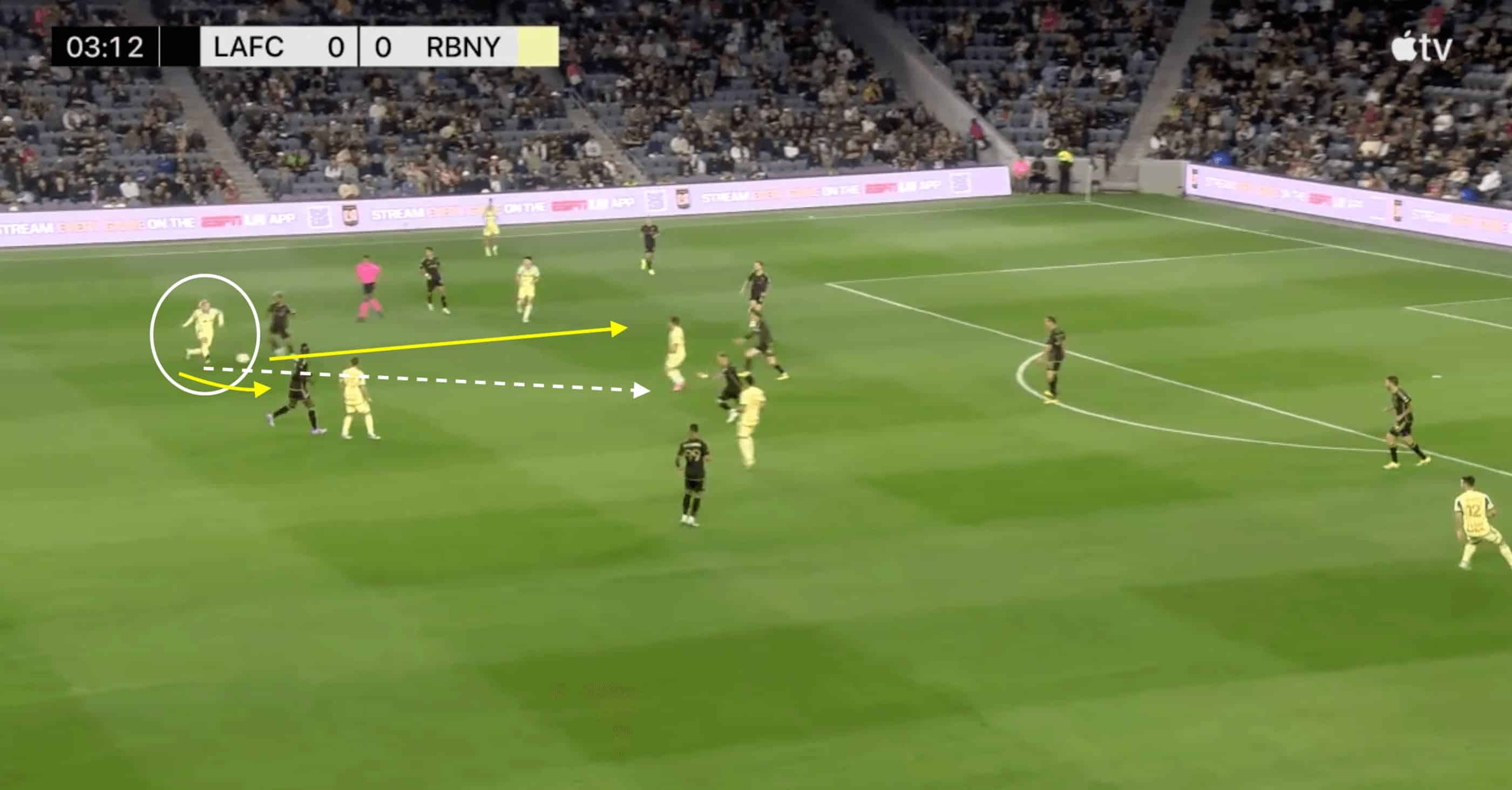
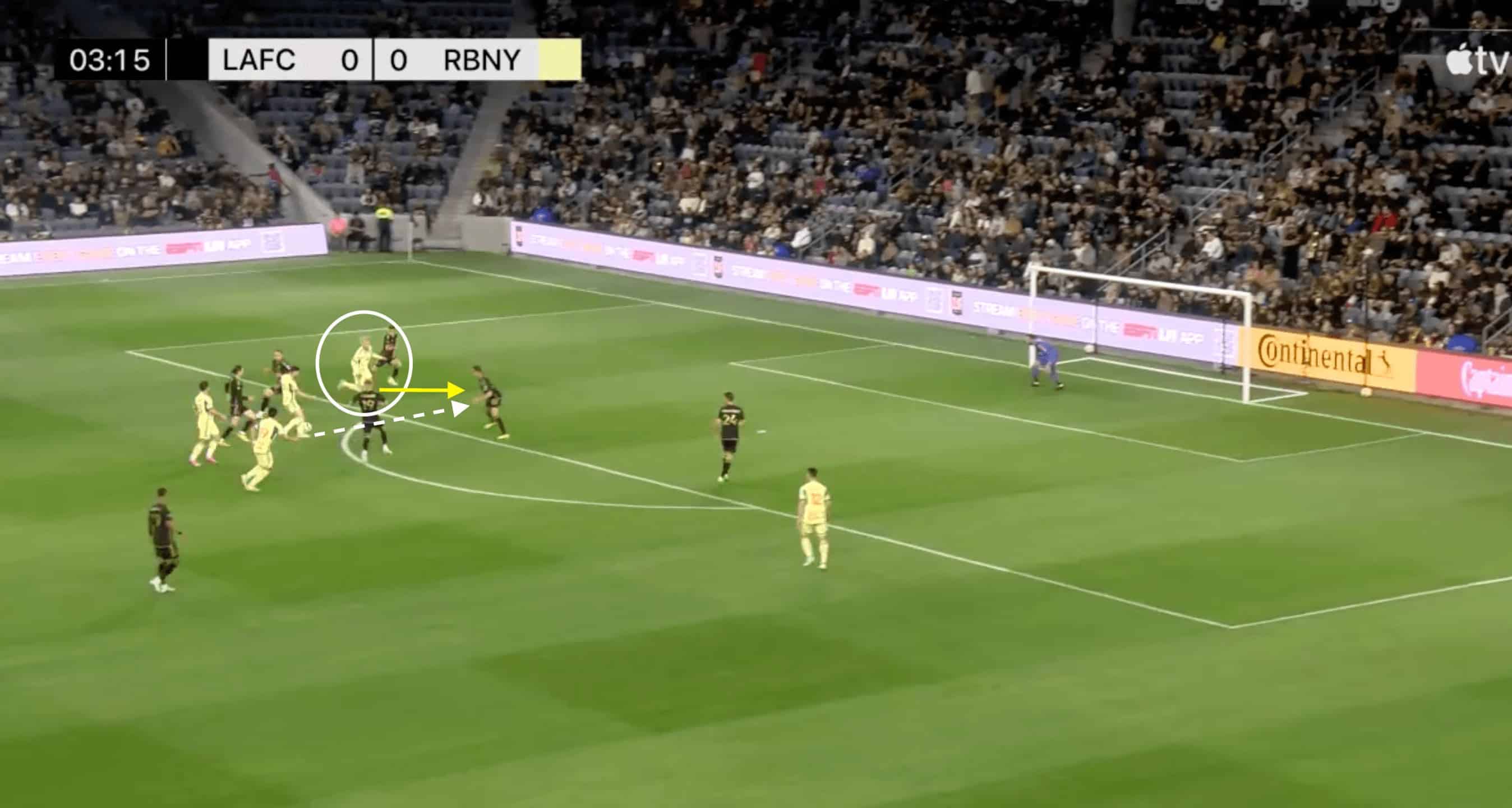
Whilst many would have predicted Forsberg to hit the ground running, another Swede has stepped up and provided the Red Bulls with an alternate route to attack, improving progression from their own third. Noah Elie was acquired from Malmo, with the Swedish central defender representing a progressive ball player who has the propensity to break the lines with direct balls or long-range passes to exploit teams in behind. He epitomises his side’s new-found patience in possession, with the ability to distribute play wide and also pick out incisive passes into the middle of the park.
After going a goal down early against Houston Dynamo, the Red Bulls responded with an exceptional high-quantity passing move, capped off by a devastating pass by Elie, allowing Elias Manoel to flick perfectly into the path of Forsberg. His 3.98 passes into the final third per 90 signify just how valuable the young defender can be for his side’s project going forward.
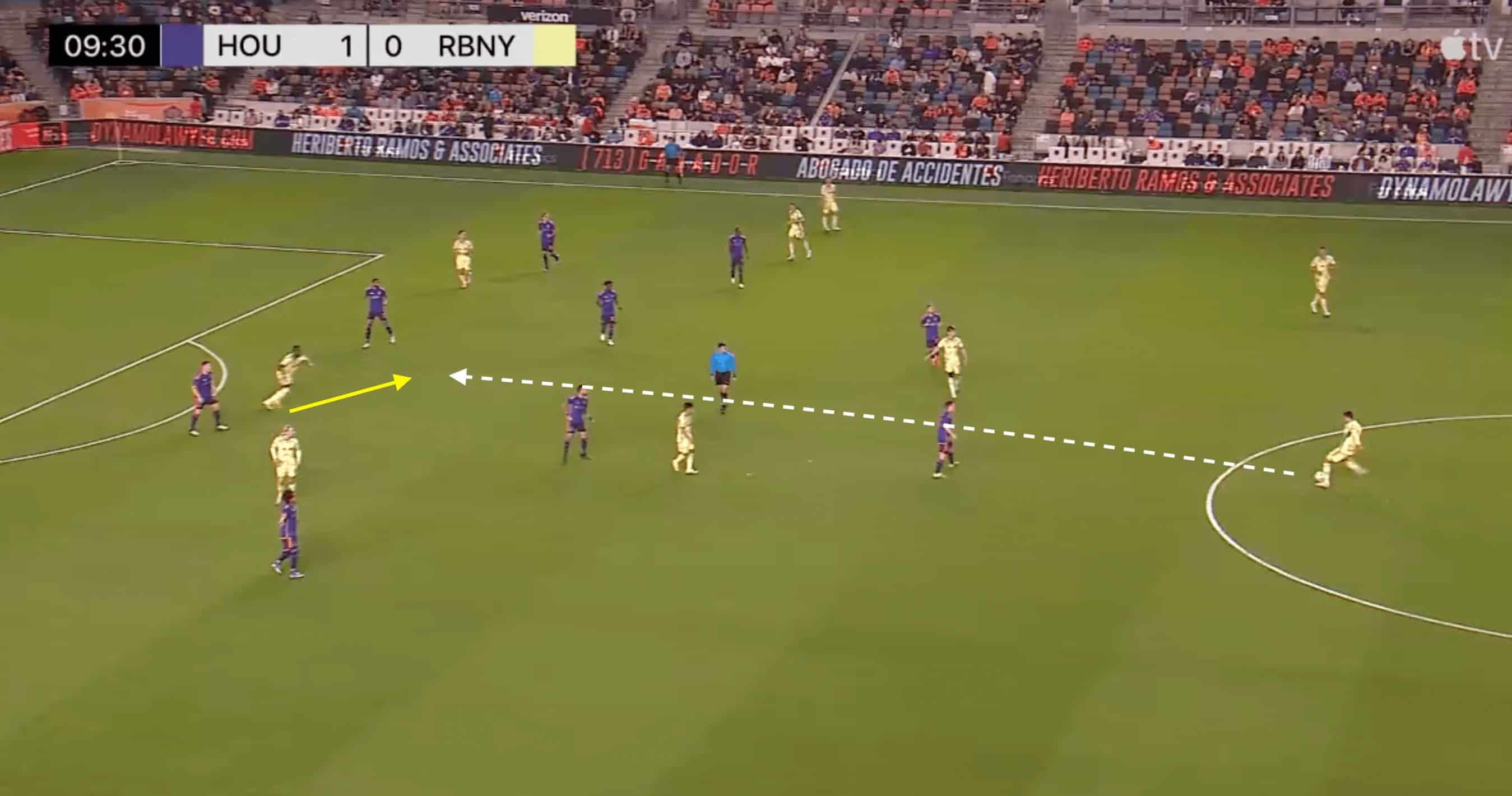
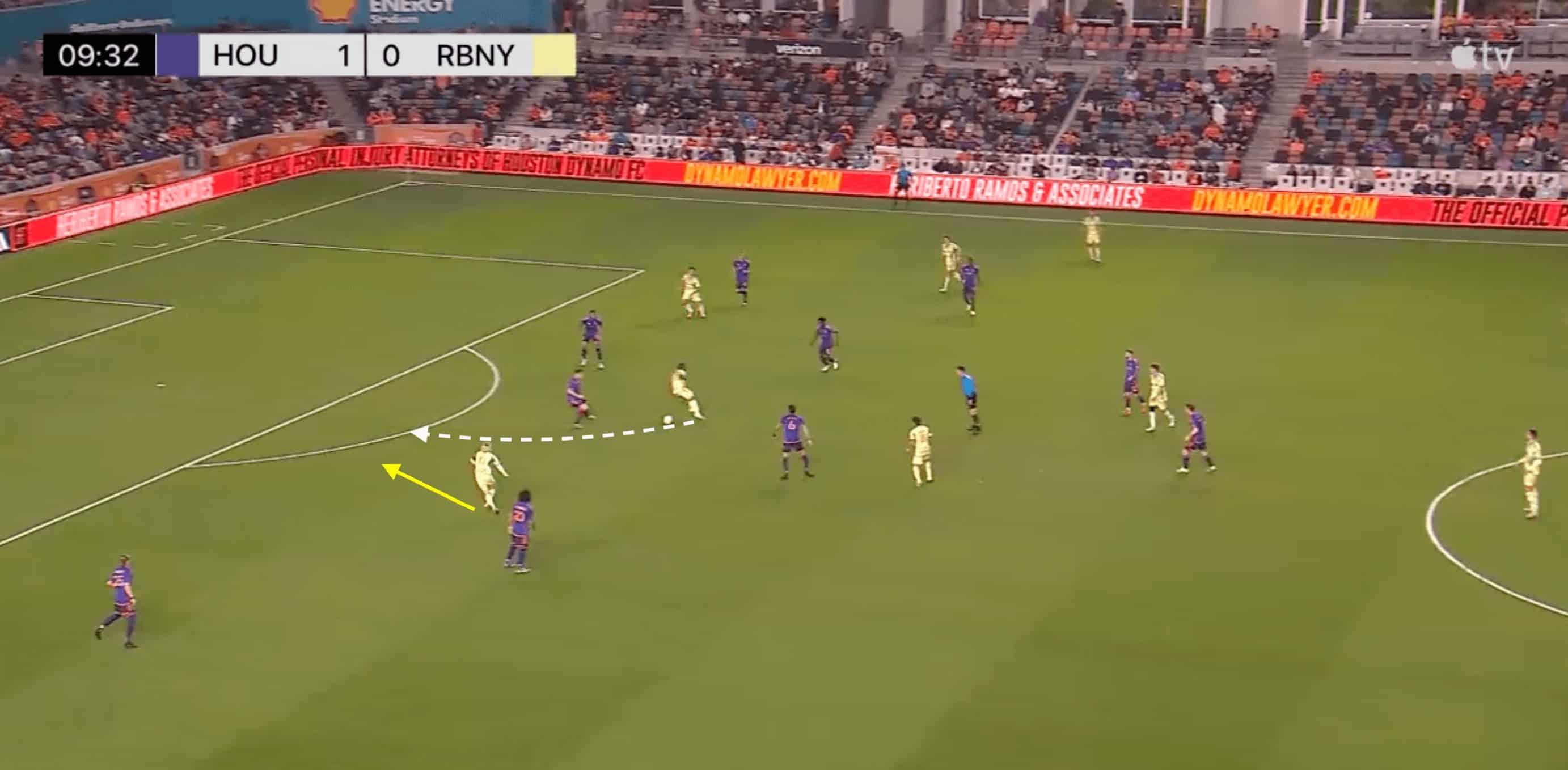
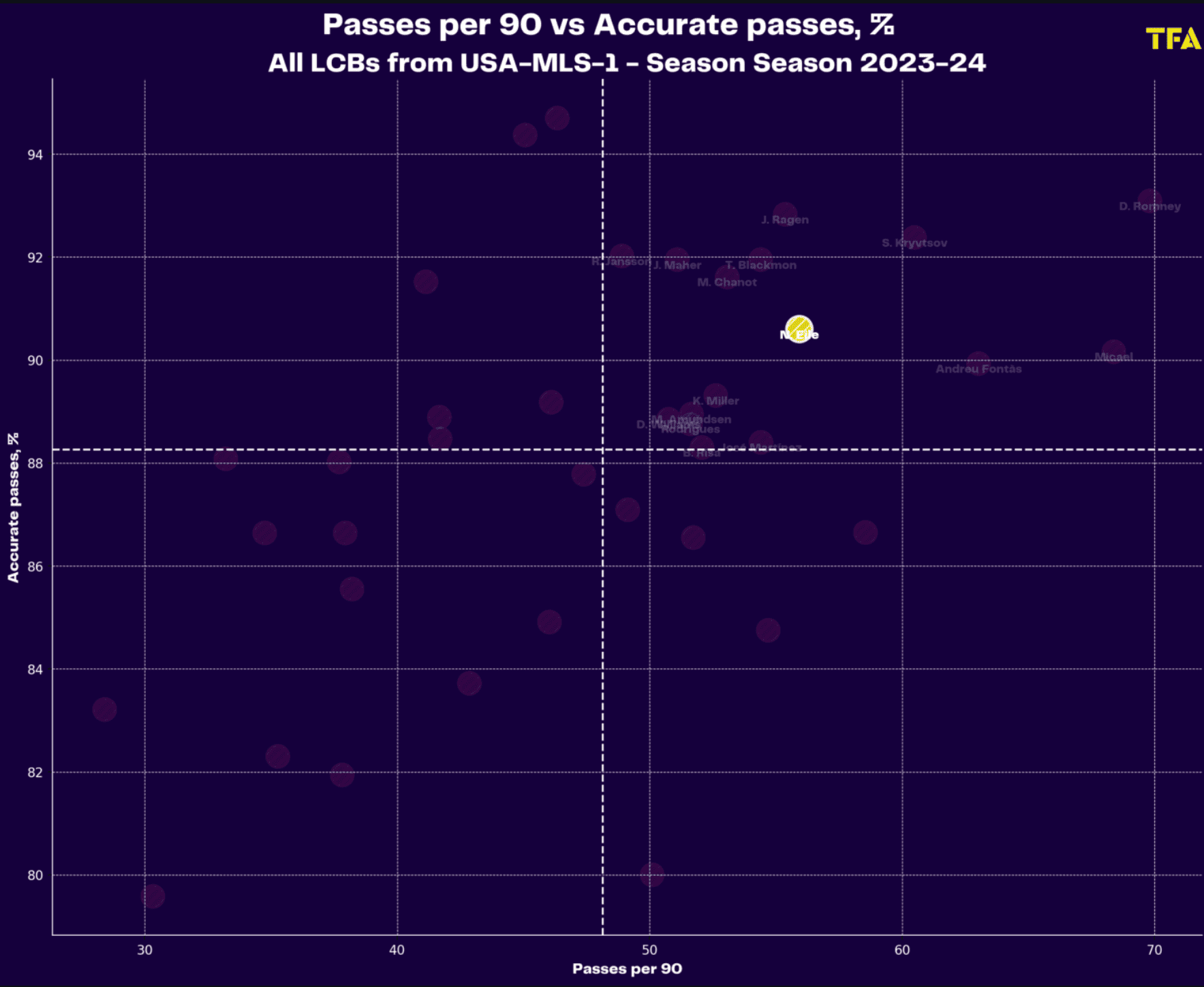
Conclusion
Even though the Sandro Schwarz era is only in its infancy over in New Jersey, the Red Bulls have taken steps to elevate their game and look to be a real contender in the Eastern Conference once again. Their early season form has been incredibly promising, having success against several sides who will undoubtedly be there at the business end of the season. Whilst the German manager remains focused on the task ahead, Red Bulls fans will surely be hoping that he is the man to bring them their eagerly anticipated first MLS title after such a long wait.

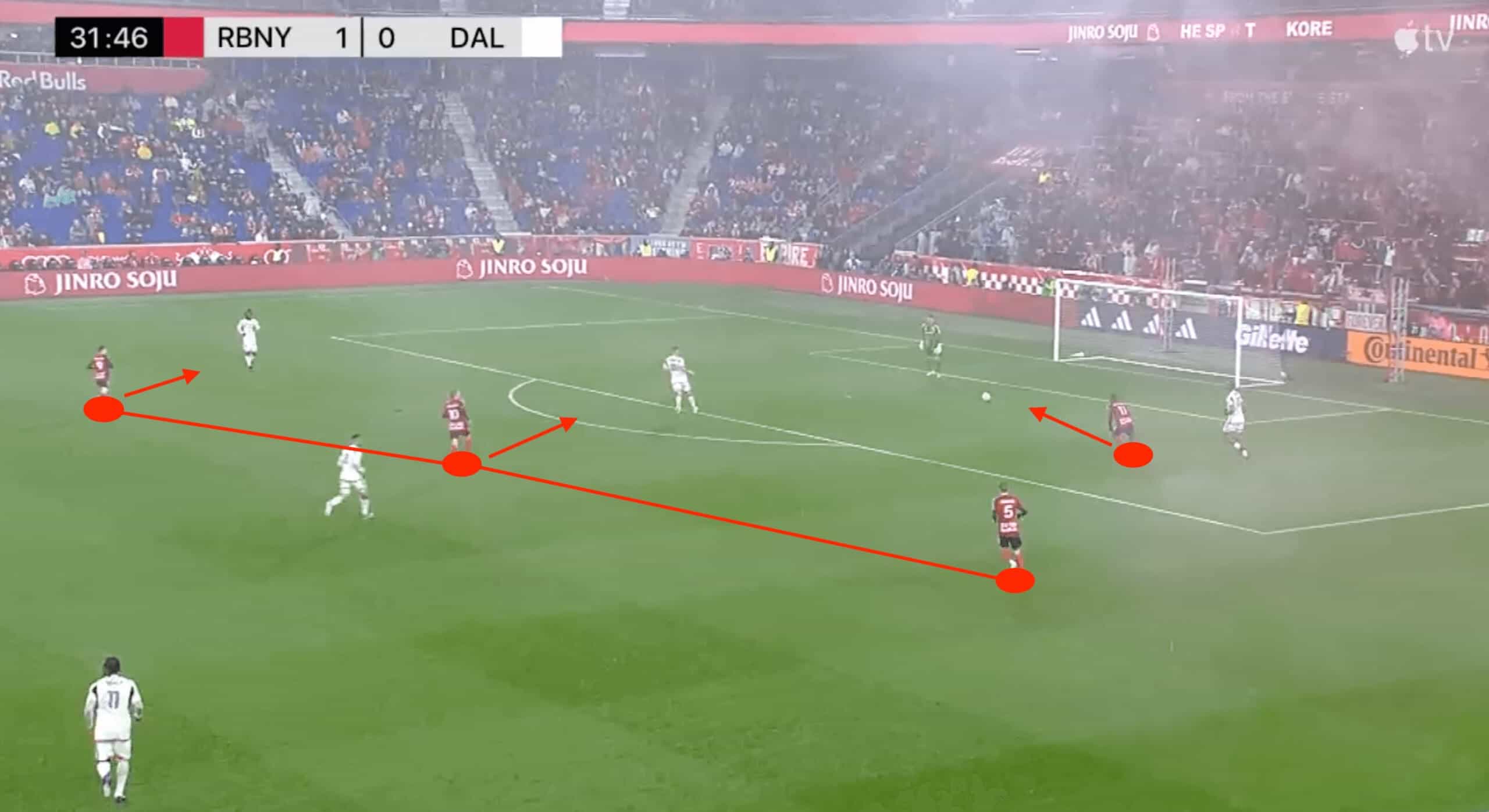



Comments